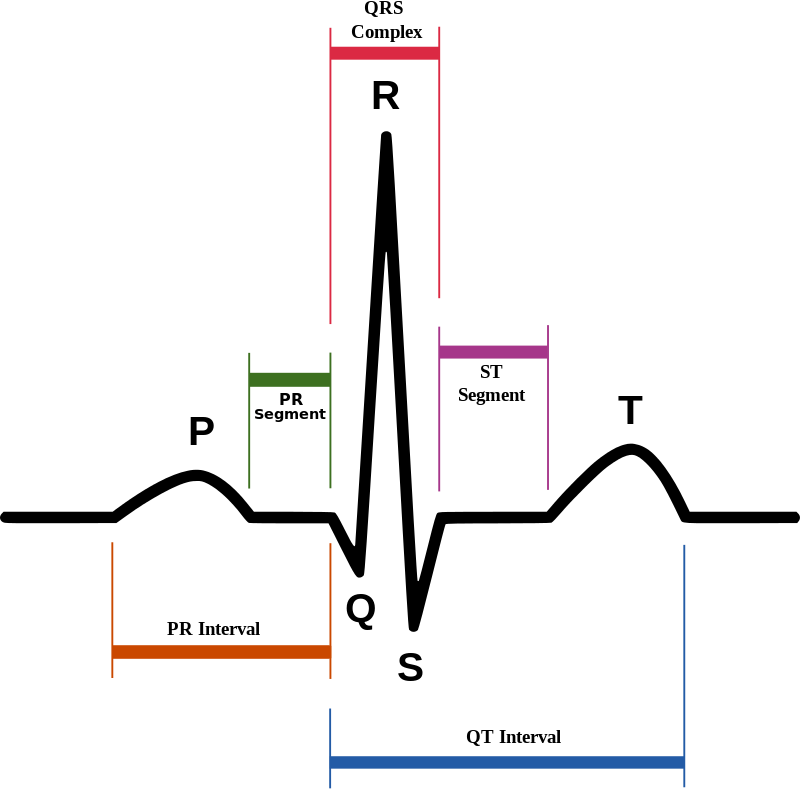HRV基础
Source: Mostly from wiki.
Heart rate variability (HRV,心率变异性) is the physiological phenomenon of variation in the time interval between heartbeats. It is measured by the variation in the beat-to-beat interval.
Other terms used include: "cycle length variability", "RR variability" (where R is a point corresponding to the peak of the QRS complex of the ECG (心电图) wave; and RR is the interval between successive Rs), and "heart period variability".
QRS complex (QRS波群): The QRS complex is a name for the combination of three of the graphical deflections seen on a typical electrocardiogram (EKG or ECG).
In adults, it normally lasts 0.06–0.10 s; in children and during physical activity, it may be shorter.


Reduced HRV has been shown to be a predictor of mortality after myocardial infarction although others have shown that the information in HRV relevant to acute myocardial infarction survival is fully contained in the mean heart rate. A range of other outcomes/conditions may also be associated with modified (usually lower) HRV, including congestive heart failure, diabetic neuropathy, depression, post-cardiac transplant, susceptibility to SIDS and poor survival in premature babies.
Variation in the beat-to-beat interval (namely INTERBEAT INTERVAL) is a physiological phenomenon. The SA node receives several different inputs and the instantaneous heart rate or RR interval and its variation are the results of these inputs.
The main inputs are the sympathetic and the parasympathetic nervous system (PSNS) and humoral factors. Respiration gives rise to waves in heart rate mediated primarily via the PSNS, and it is thought that the lag in the baroreceptor feedback loop may give rise to 10 second waves in heart rate (associated with Mayer waves of blood pressure), but this remains controversial.
Factors that affect the input are the baroreflex, thermoregulation, hormones, sleep-wake cycle, meals, physical activity, and stress.
Errors in the location of the instantaneous heart beat will result in errors in the calculation of the HRV. HRV is highly sensitive to artifact and errors in as low as even 2% of the data will result in unwanted biases in HRV calculations. To ensure accurate results therefore it is critical to manage artifact and R-R errors appropriately prior to performing any HRV analyses.





